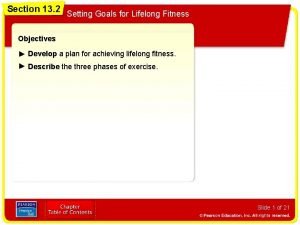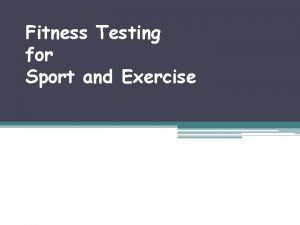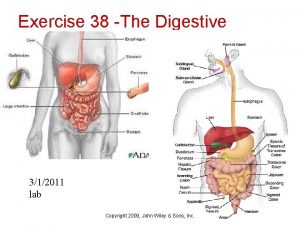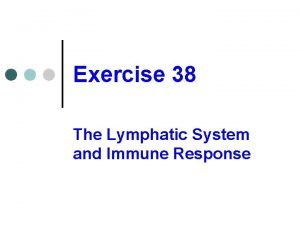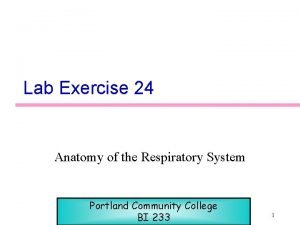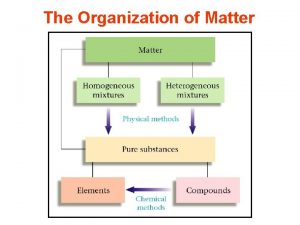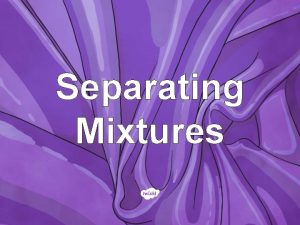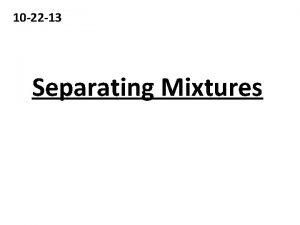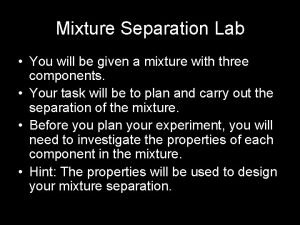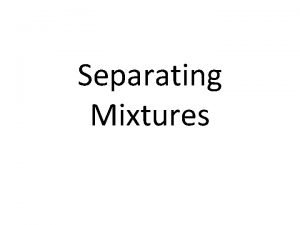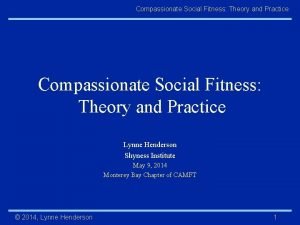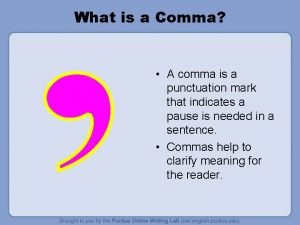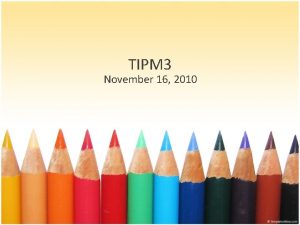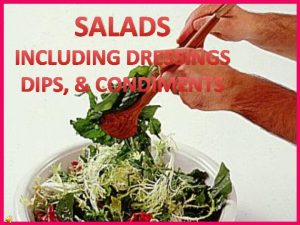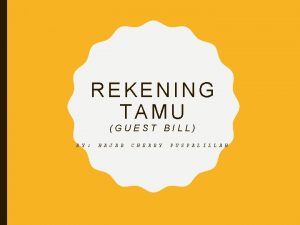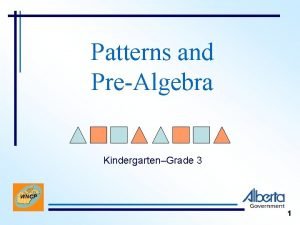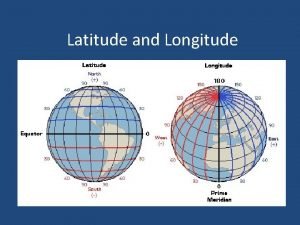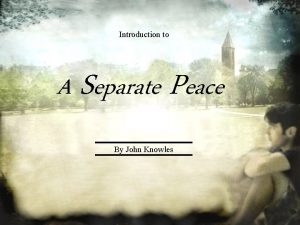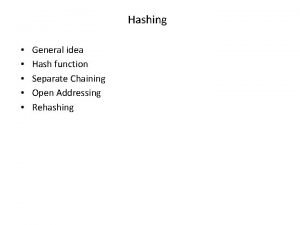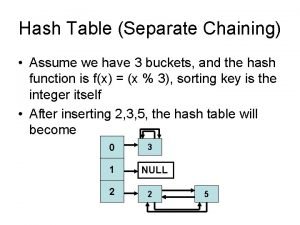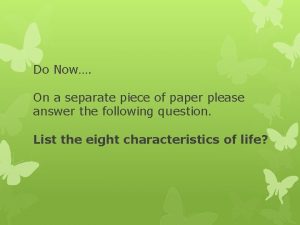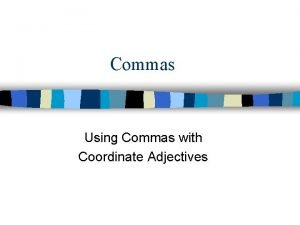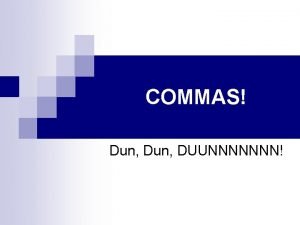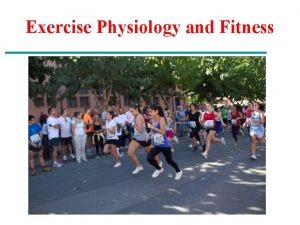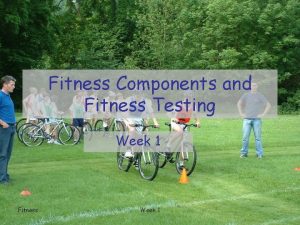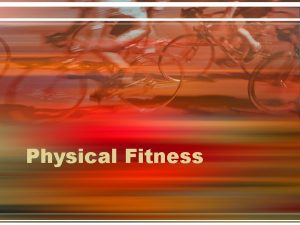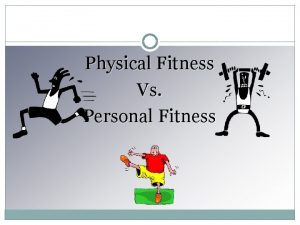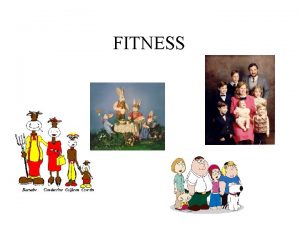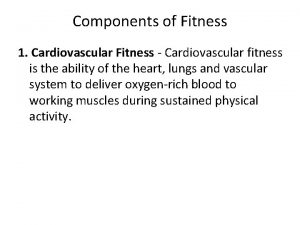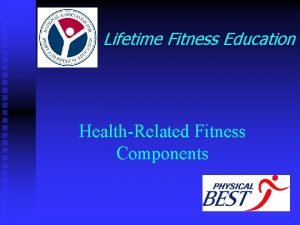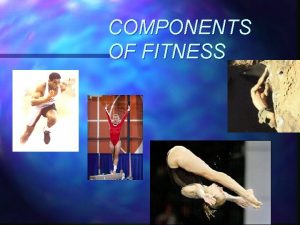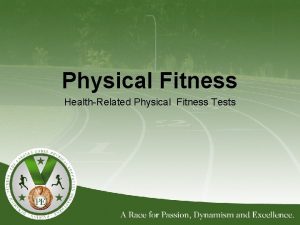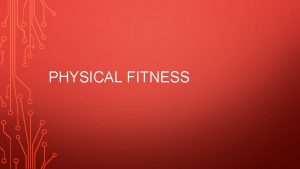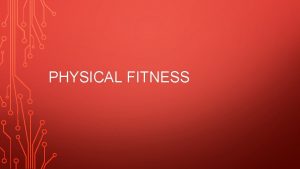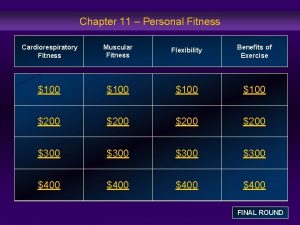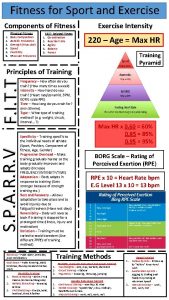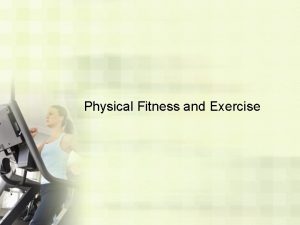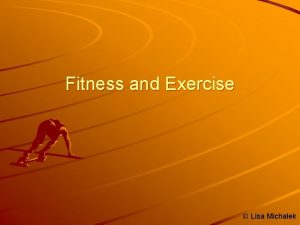Exercise and Fitness On a separate sheet of































- Slides: 31

Exercise and Fitness

On a separate sheet of paper… n With a partner, list as many reasons for why exercise is important n Each pair will then persuade the class as to why exercise is important n You will have 2 minutes!

Why is Exercise important? n Prevents Disease n n n Reduces risk of heart disease, cancer, high blood pressure, and diabetes. Improves appearance and can keep you from showing signs of aging. Improves Stamina n n Trains the body to be more efficient Body uses less energy to perform work

Why is Exercise important? n Strengthens and Tones n n n Enhances Flexibility n n n Develops muscle, bones, and ligaments for increased strength and endurance Improves posture Reduces chance of injury Improves balance and coordination Controls Weight n Burns calories

Why is Exercise important? n Improves Quality of Life n n Reduces stress Lifts mood Improves sleep patterns Look better/feel better = higher self-esteem!


The WEIGHT Control formula n If you take in LESS calories than you burn, you will lose weight. n If you take in MORE calories than you burn, you will gain weight.

Exercise and Fitness Info. . n n One pound of fat = 3, 500 calories BMR – Basil Metabolic Rate n The rate at which you use energy when completely at rest n The number of calories that your body would burn if it sat inactive all day and did not eat a single thing all day.

Body Mass Index (BMI) n BMI n n Indicator of body fat Determined by a persons height and weight Sally’s BMI is 22. 1 which is normal for her age n A man 6’ 4” and 242 pounds has a BMI of 29. 5 which is OVERWEIGHT for his age. n n n Does not take into account muscle NOT ALWAYS ACCURATE!


BMI n n Underweight = <18. 5 Normal weight = 18. 5 -24. 9 Overweight = 25 -29. 9 Obesity = BMI of 30 or greater

Underweight n n n Below the standard weight range for your height Risks: hard to fight infection due to inadequate nutrients and energy, undernourished which leads to abnormal body functions Higher risk to develop anemia (low iron)

Overweight vs. Obesity Overweight =heavier Obesity = having than standard weight excess body fat for your height Very common in the Overweight may NOT US be risky… Body composition is a 2 reasons for obesity: better measure for this 1. sedentary lifestyle Ex. Football player 2. poor eating habits

The Basic Components of Fitness n 1. Body Composition n 2. Flexibility n 3. Muscular Strength n 4. Muscular Endurance n 5. Cardiorespiratory Endurance

Body Composition n Body Composition is the amount of body fat compared to lean tissue, such as muscle and bone.

Skin fold calipers n Skin Fold Calipers n n n Low cost Not very effective unless tester is very experienced Costs may very from. 50 to $2

Fat Analyzer n Medium Cost ($100) n Do not make models for young ages n Good Effectiveness rate

Underwater Body Weight High costs n Not very accessible n Very high reliability n

Flexibility n n Flexibility: The ability to move a body part through a full range of motion Example: Touch toes / Splits

Muscular Strength: the ability to exert force against resistance n Example: Arm Wrestling n

Muscular Endurance: The ability of the muscle to keep working over a period of time without getting fatigued n Example: Wall Sit, Plank n

Cardiorespiratory Endurance n n Cardiorespiratory Endurance: The ability of the heart to send fuel and oxygen to body tissues during long periods of exercise Examples: Marathon / Triathlon

Types of Exercise n n Aerobic n Oxygen is continuously taken for at least 20 minutes n Examples: jogging, swimming, dancing, cycling Anaerobic n Intense physical activity that last from a few seconds to a few minutes, during which muscles use up more oxygen than the blood can supply n Examples: 100 meter dash, shot & disc throw, some gymnastics

Types of Resistance Training n Isometric n Muscle Tension to increase strength with little or no movement n Example: pushing palms together

Types of Resistance Training n Isotonic n Combines muscle contraction with repeated movement n Example: Push-ups , Pull-ups, Weight lifting

Types of Resistance Training n Isokinetic n Resistance through an entire range of motion n Example: pushing or pulling on a hydraulic lever n Best overall type of training (full range of Motion!!!)

Basic Components of an Exercise Session n n Warm – Up n Prepare muscles for work about to come Workout (FITT) n Frequency n n Intensity n n Vary what you do (Run - Monday/Wednesday, Lift (Tuesday/Thursday) Time/Duration n n How hard you workout Type of Activity n n How often you workout Time spent during exercise session Cool – Down n Do this to return you heart rate back to normal

Heart Rates n What is RHR? n n What should an average person’s be at? n n Resting Heart Rate 72 – 84 What is your RHR? ______ n Take pulse for 10 seconds and multiply by 6

Heart Rates Cont. . n What does this tell you about your fitness level? n n 50 or under = top athlete 51 – 71 = good athlete 72 – 84 = average 85 or above = needs to start working out

Heart Rates Cont…. n MHR n Formula n 220 – your age n THR n – Max Heart Rate – Target Heart Rate Formula n 220 – your age X. 6 and X. 85

Target Heart Rate Example n 15 year old n n 220 – 15 = 205 X. 6 = 123 205 X. 85 = 174 123 – 174 is the THR
 Benefits of skill related fitness
Benefits of skill related fitness Chapter 13 exercise and lifelong fitness
Chapter 13 exercise and lifelong fitness Wolters kluwer
Wolters kluwer Fitness testing for sport and exercise
Fitness testing for sport and exercise Exercise 38 review sheet art-labeling activity 3 (1 of 2)
Exercise 38 review sheet art-labeling activity 3 (1 of 2) Exercise 38 review & practice sheet: lymphatic system.
Exercise 38 review & practice sheet: lymphatic system. Bronchi histology
Bronchi histology Stock verification sheet is also known as _______ sheet
Stock verification sheet is also known as _______ sheet How to seperate salt and sand
How to seperate salt and sand How to separate raisins and flour
How to separate raisins and flour How to separate salt and water
How to separate salt and water Is english language and literature two separate gcses
Is english language and literature two separate gcses Sorting mixtures
Sorting mixtures Centerlines are used to separate the title block and notes.
Centerlines are used to separate the title block and notes. How to separate sand and finely ground polystyrene foam
How to separate sand and finely ground polystyrene foam Example of filtration
Example of filtration Obstructed heritage and unobstructed heritage
Obstructed heritage and unobstructed heritage Health and fitness: theory and practice
Health and fitness: theory and practice Introductory dependent clause
Introductory dependent clause Separate result unknown
Separate result unknown Accompaniment salad meaning
Accompaniment salad meaning Contoh bill hotel
Contoh bill hotel Separate result unknown
Separate result unknown Imaginary horizontal lines in the globe.
Imaginary horizontal lines in the globe. Chet douglass a separate peace
Chet douglass a separate peace Double hashing example
Double hashing example Separate chaining hash table
Separate chaining hash table Separate piece of paper
Separate piece of paper Commas adjectives
Commas adjectives Commas around in fact
Commas around in fact When to use a comma in a list of items
When to use a comma in a list of items Commas to separate adjectives
Commas to separate adjectives

